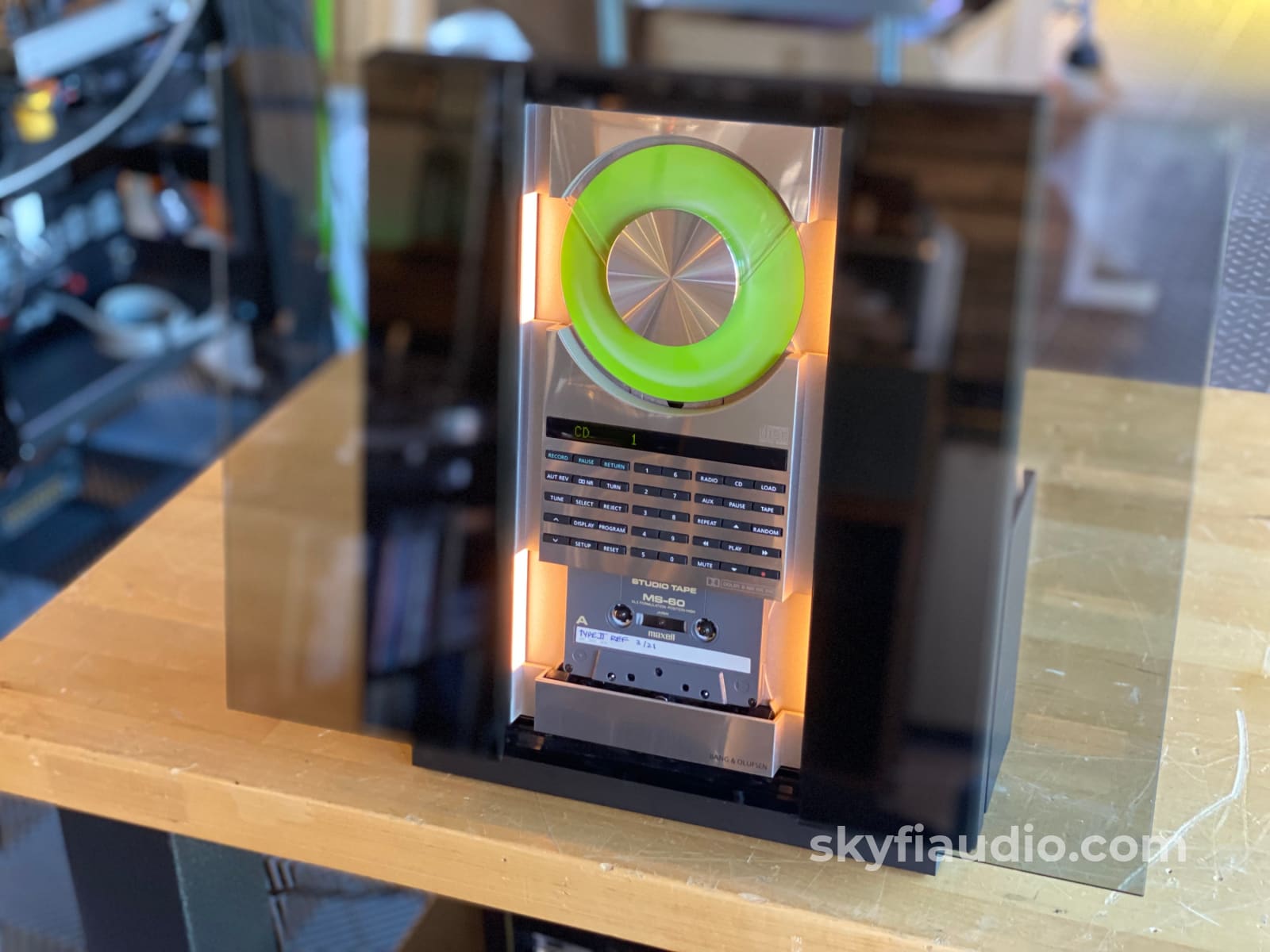
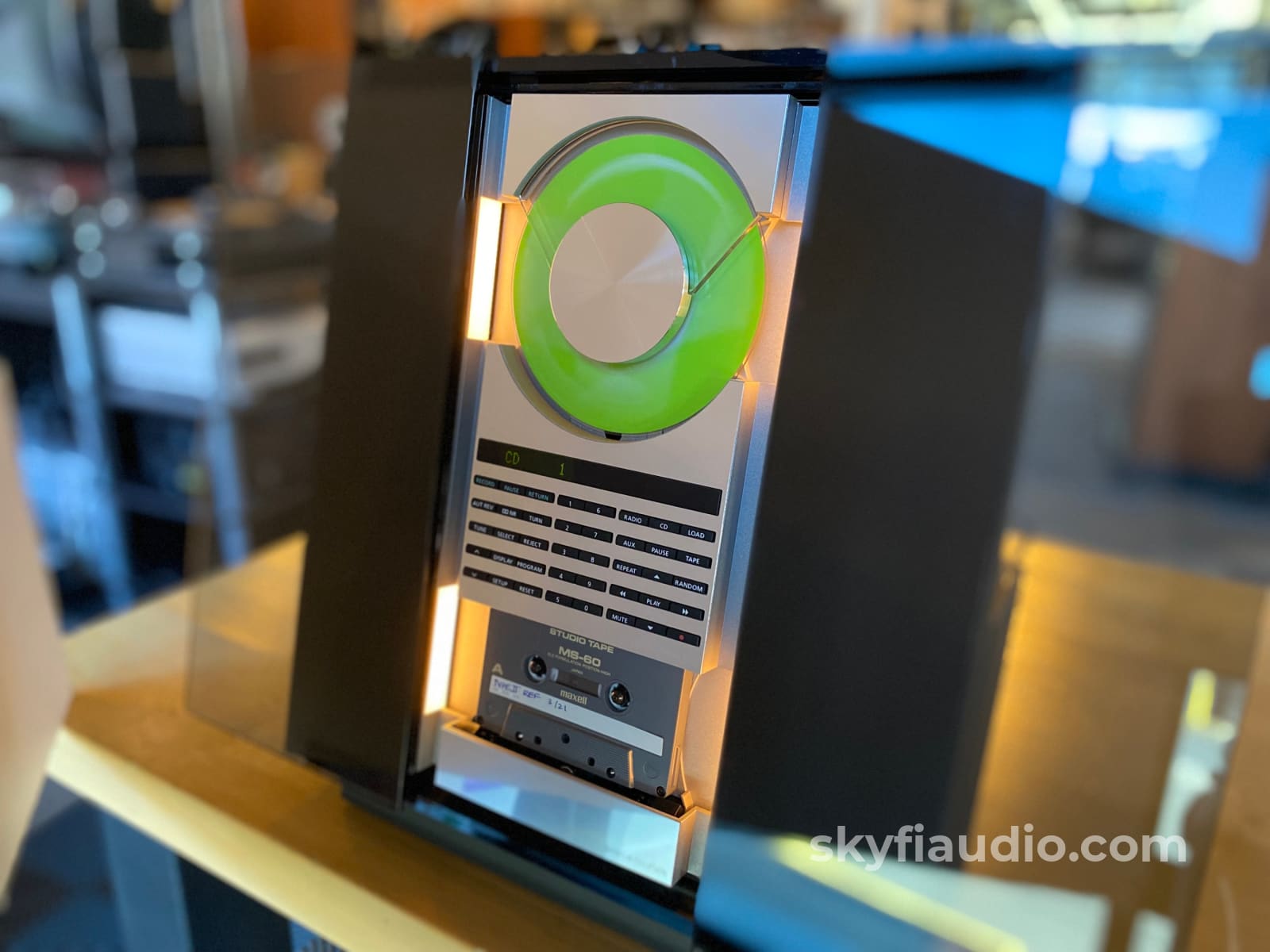
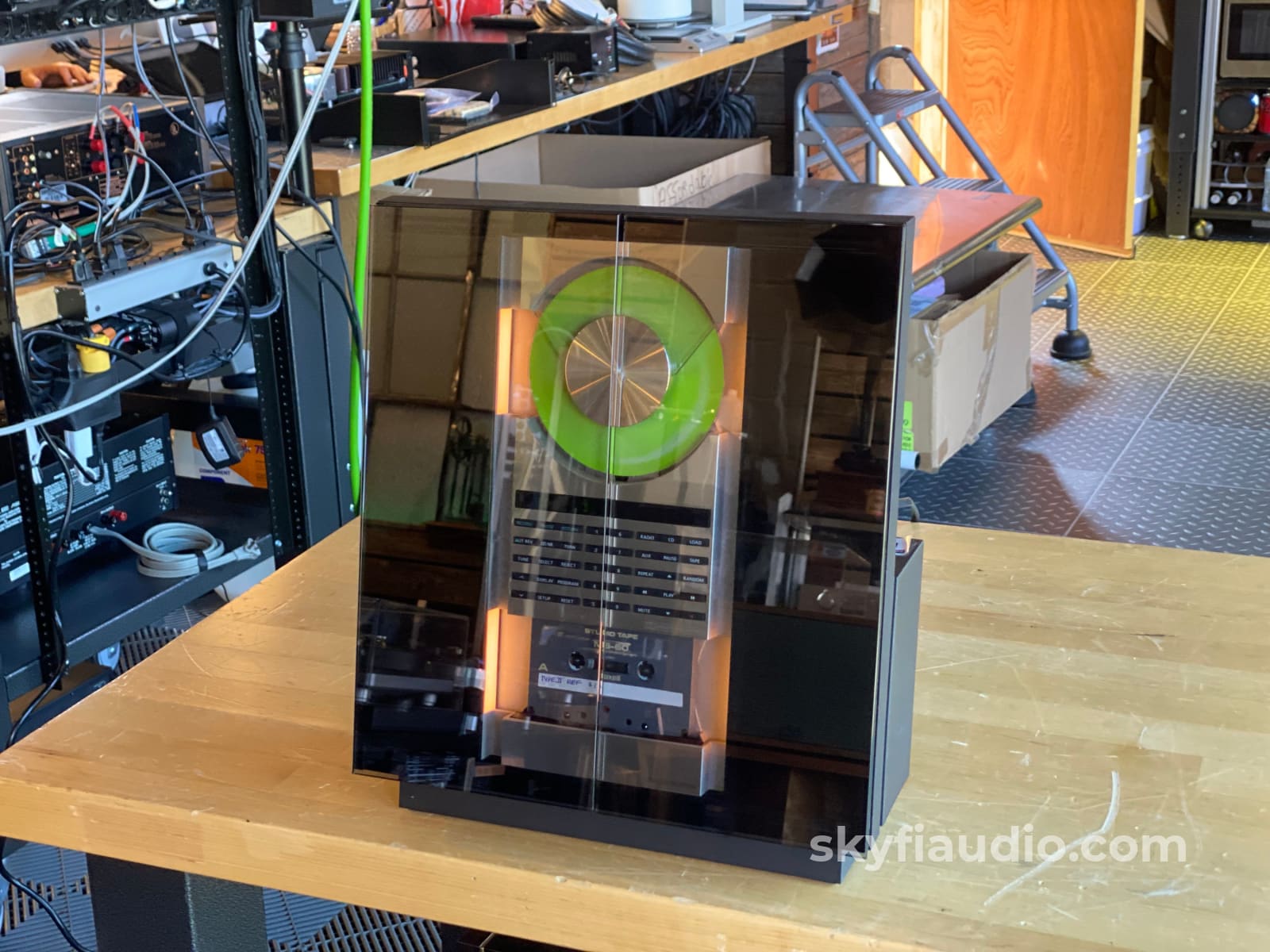
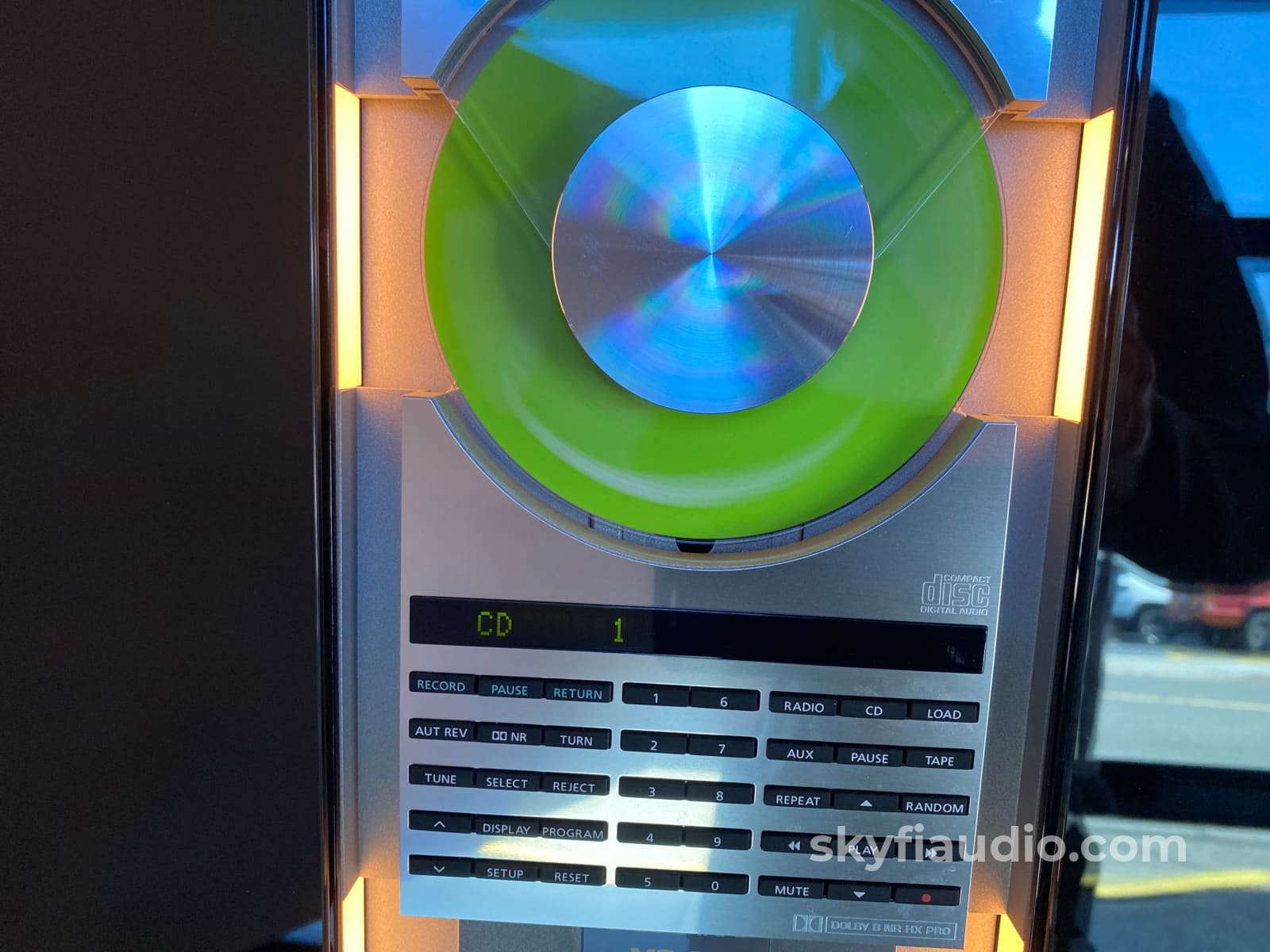
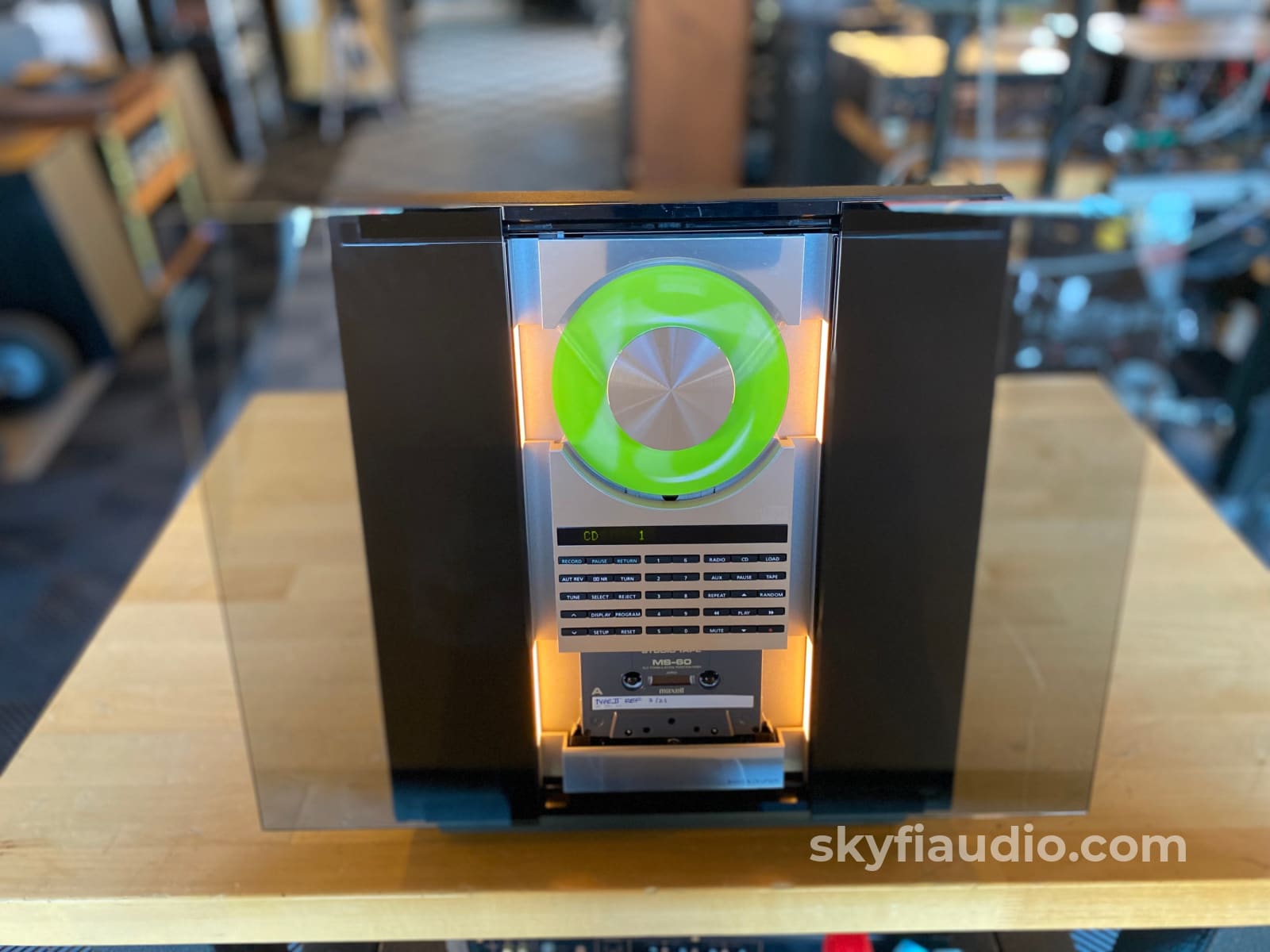
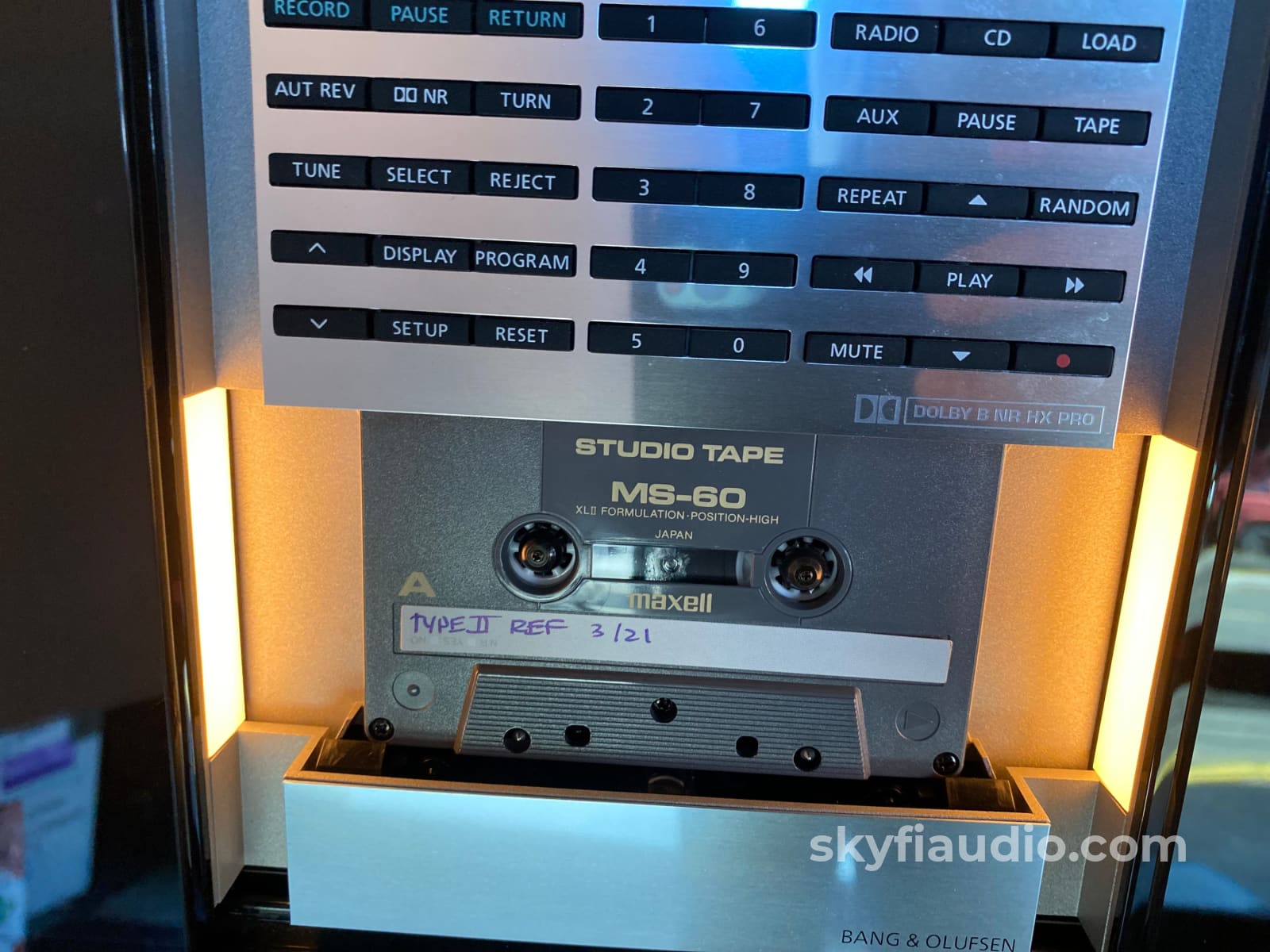
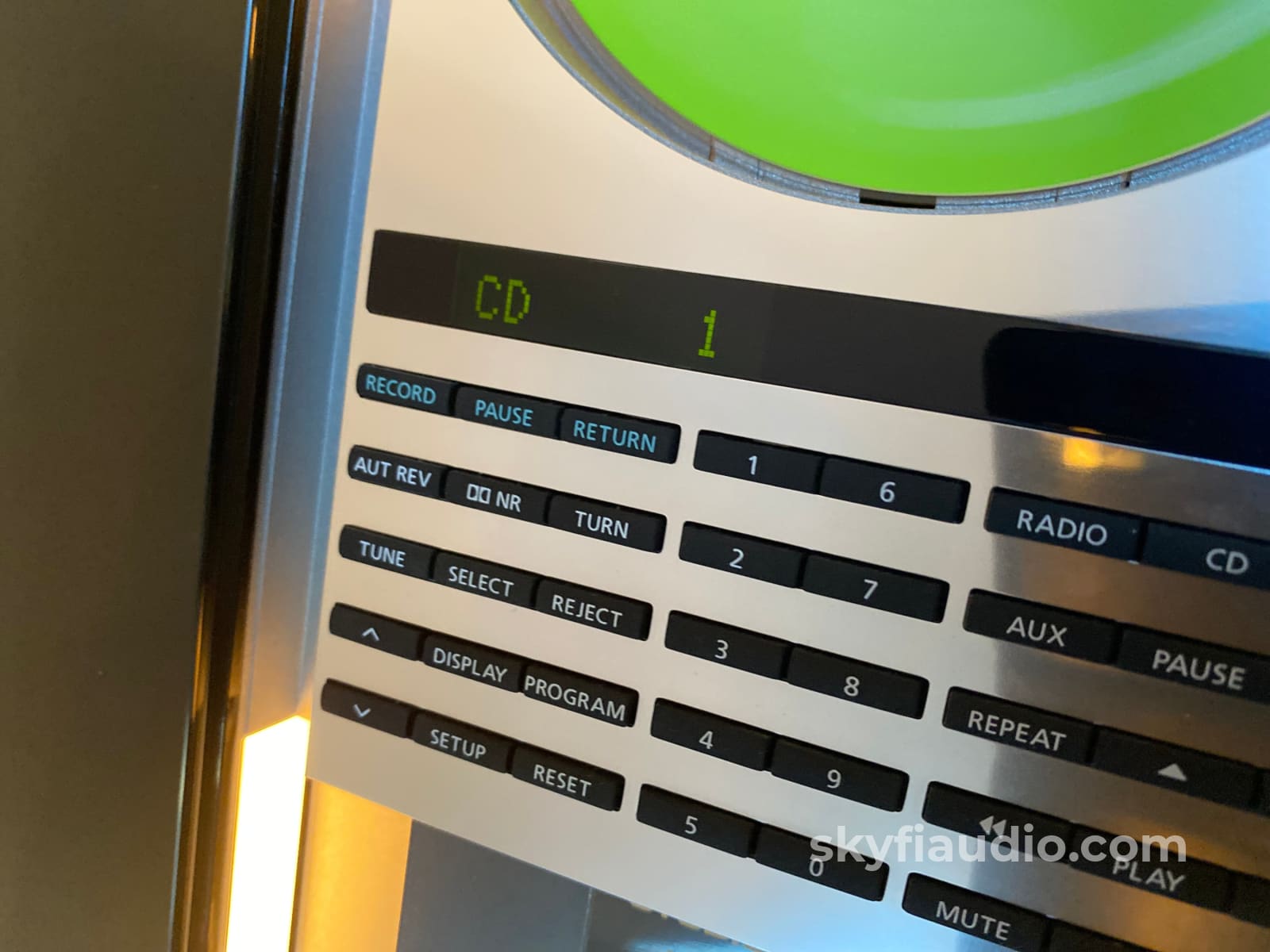
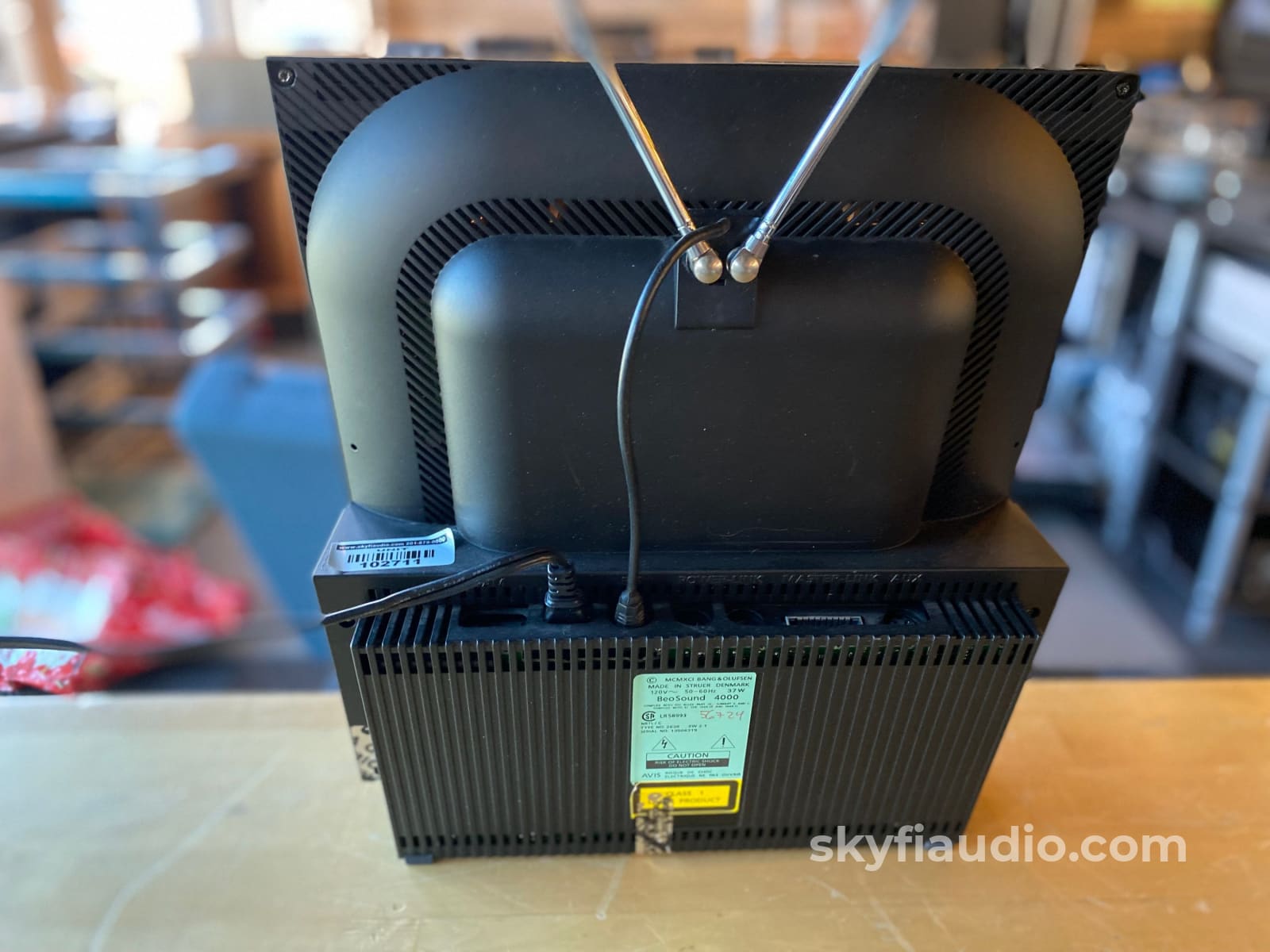
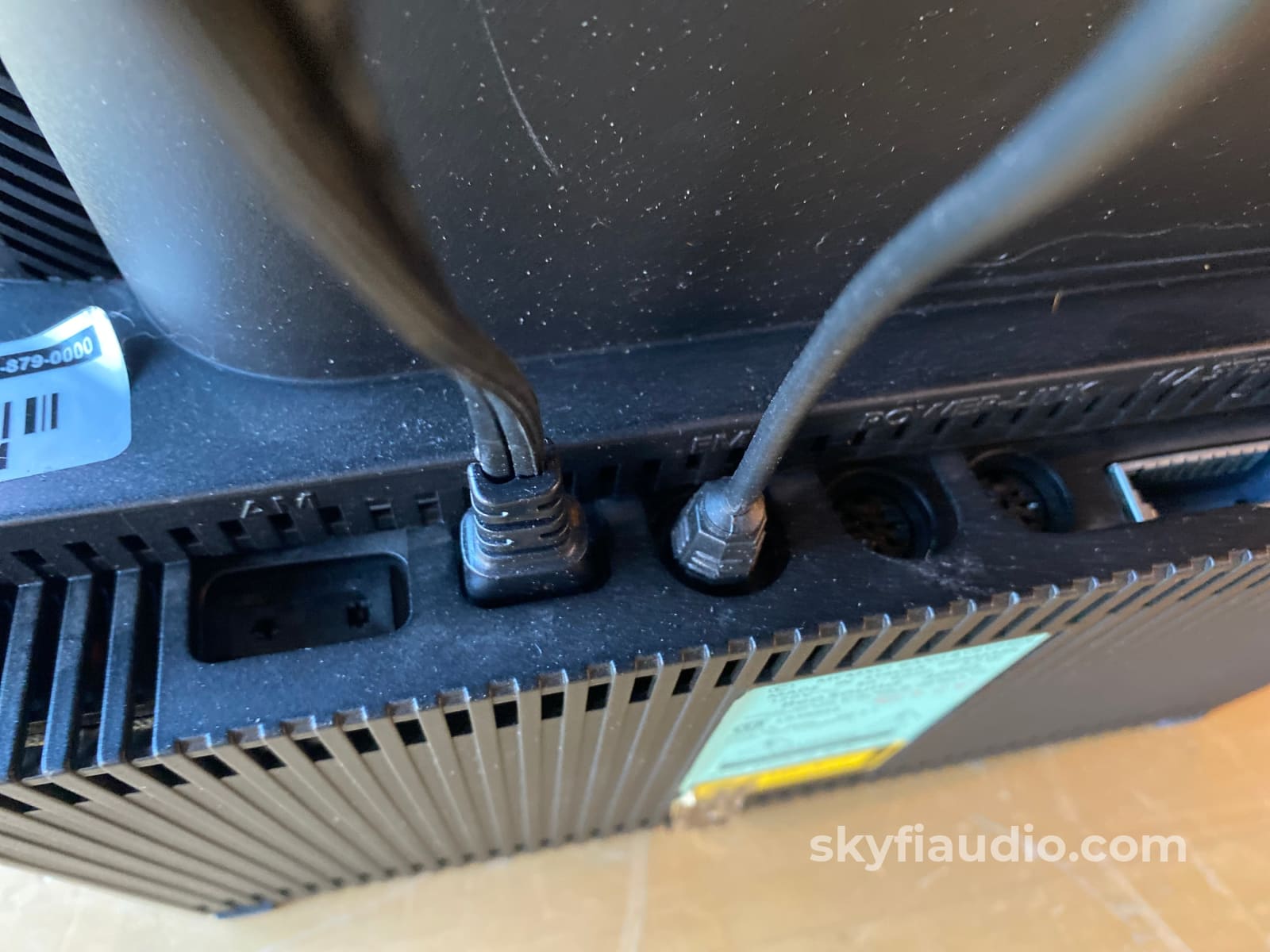
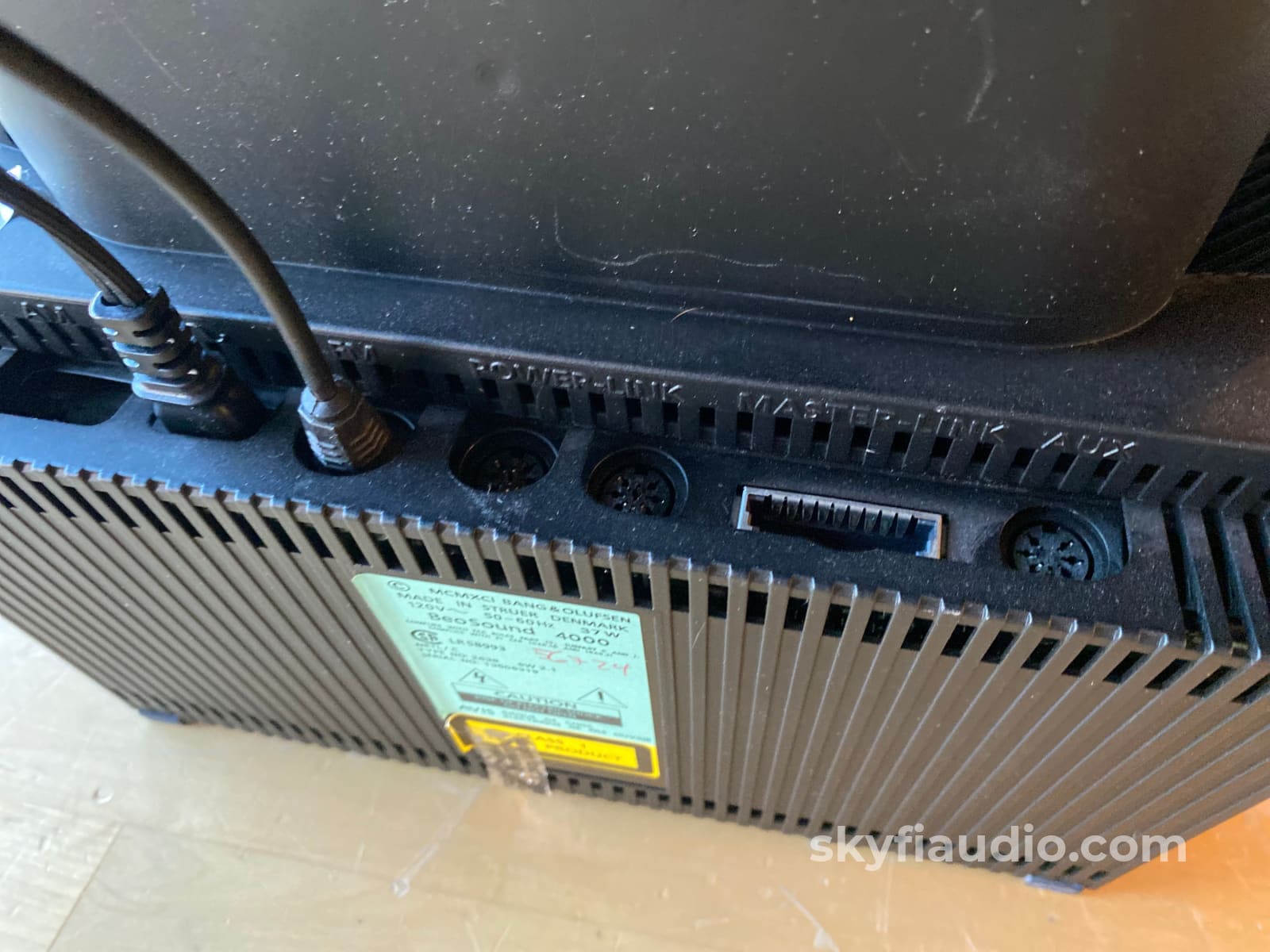
Bang & Olufsen Beosound Ouverture / 4000 - CD, FM, and Cassette Player
Free Shipping on Most Electronics - Excludes Speakers and Items Requiring Freight - Contiguous U.S. Only
Pickup currently unavailable at SkyFi 479

Bang & Olufsen Beosound Ouverture / 4000 - CD, FM, and Cassette Player
SkyFi 479
479 South Broad Street
Glen Rock NJ 07452
United States
Just serviced super cool Beosound Ouverture / 4000 in perfect working condition.
Tape drive received new belts and so did the glass door system.
CD player works super well and FM is nice and clear.
Good cosmetic condition too!
There are plenty of these out there but very few that have been serviced.
*Please note no speakers are included. We can help you match these with some B&O speakers if needed.
More from the fabulous BEO.ZONE Website:
This product was born with two names: BeoSound Ouverture in Europe and BeoSound 4000 for the rest of the world.
BeoSound Ouverture replaced the Beocenter 2500 in 1994 and comprised a CD player and cassette recorder, Stereo FM and AM radio with connections for Power Link and (later) MasterLink.
Bringing the Beocenter 2500 right up to date with a larger aluminium clamper (from 2003 onwards) and updated software in order that it would function with the Beo4 remote control, the other obvious upgrade was that of a MasterLink connector allowing it to be linked with other compatible Bang & Olufsen products. Another difference between the BeoSound Ouverture and Beocenter 2500 was that the Ouverture did not feature two-way communication.
This product was born with two names: BeoSound Ouverture in Europe and BeoSound 4000 for the rest of the world.
The BeoSound Ouverture had a relatively long life, and during its nine years within the product range was further improved with software upgrades as well as a variety of CD mechanisms (the later ones read the compact disc in a straight line, rather than in a curved arc as had been the case with the earlier models).
When the Ouverture included MasterLink, Beosystem AV9000’s silmilarly-looking Master Panel was withdrawn from sale as this item became superfluous after the rest of that system had received its own software updates.
And with the use of cassettes falling out of favour, the BeoSound Ouverture was discontinued in 2003 and was replaced by the similar-looking digital-storage unit, BeoSound 3200.
BeoSound Ouverture / 4000 technical specifications
Dimension (W x H x D):
12.6" x 14.17" x 6.30"
(32 x 36 x 16cm)
Weight:
15.43 lbs.
(7kg)
Cabinet finish: Black/aluminium
Power consumption: Typical 32 watts, standby < 3,5 watts
Tuner: Built-in
Pre-tuned radio programmes: 30 FM or AM
Radio ranges: FM-LW-MW
RDS: According to type
Compact disc: Built-in
CD sizes: 12 cm, 8 cm
Frequency range: 20 - 20,000 Hz, +-1 dB
Signal-to-noise-ratio: Typical 101 dB, A weighted
D/A converting: Bitstream, analogue filtration
Features:
Programming, Random , Repeat , Edit
Tape recorder: Built-in
Recording system: HX PRO
Tape transport: Auto Reverse
Noise reduction: Dolby B NR
Frequency range: 30 - 16,000 Hz
Signal-to-noise-ratio: > 65 dB, Dolby B, chrome
Radio: Built-in
Pre-tuned programmes: 30 AM or FM
Radio ranges: FM-LW-MW
FM frequency range: 87.5-108MHz
AM frequency range: 153-279/522-1.610 kHz
Connections:
Power Link (two)
AUX
FM aerial, 75 ohm
AM aerial (Dedicated)
Master Link (ML)
Headphone/Mini jack
|
Item |
Included |
|
Original Box |
Not Included |
|
Manual |
Not Included |
|
Remote |
Not Included |
|
Cables |
Yes - Power Only |
|
Physical Condition (Info Here) |
7 / 10 |
|
Working Condition |
10 / 10 |
The SkyFi Testing Process for Tuners:
We start with a visual inspection of all internal components to make sure that there are no signs of heat stress or damage. Capacitors are checked for telltale signs of predictive failure including bulging, shrunken wrappers, or physical leakage. We also inspect the PCBs for discoloration from resistors or transistors that may have been running hot. On vintage units we often spot check select capacitors for value and ESR. Vintage analog tuners also have moving parts related to the tuning gang and dial string. These parts are inspected for smooth operation.
If the unit passes visual inspection it is bench tested for a handful of key performance parameters using a Sencore SG80 AM/FM Stereo Analyzer. The SG80 allows us to “simulate” an ideal radio station using precision test signals instead of music. This device, in conjunction with an oscilloscope allows us to properly evaluate the following parameters:
1. AM Reception (Where Applicable)
2. FM Mono Reception & Tuning Meter Function
3. FM MPX Reception (Stereo)
4. Dial Tracking - How accurately the tuner dial or display indicates the actual frequency of the broadcast being received.
5. Stereo Separation - A properly working stereo tuner will have minimal crosstalk between the left and right channel.
6. Sensitivity & Signal Strength Meter Function - By lowering the output of the SG80 we can simulate weak stations and determine how well the tuner will be able to pull in weak distant stations. This adjustment also helps us verify signal strength meter function.
If the tuner has acceptable performance related to the parameters above we connect the unit for listening tests with a simple dipole antenna. We listen for audio reproduction quality of local stations and evaluate how many stations the tuner can receive while we sweep through the dial. We are looking to verify that the tuner can decode stereo on strong local broadcasts and pick up a wide variety of local stations at the bottom, middle, and top of the frequency band. At this point we also test convenience features such as muting, filters, built in oscilloscope function, etc.
We finish up with an extended listening test on our long term test rig. We tune in a strong local station and monitor for drift over a 2-3 hour period.
The SkyFi Testing Process for CD Players:
We start with a visual inspection of all internal components to make sure that there are no signs of heat stress or damage. Capacitors are checked for telltale signs of predictive failure including bulging, shrunken wrappers, or physical leakage. We also inspect resistors and other passive components for signs of overheating. When the unit is first powered on we check the drawer mechanism function.
After the visual inspection we connect the CD Player’s RCA outputs to our Sencore PA81 Power Analyzer which simulates a real world input impedance and allows us to monitor the output on an oscilloscope. We start with a test CD with precision test signals to verify proper output on both channels. If the CD player has balanced outputs these are also tested at this time. If this check passes, we move onto evaluation with actual music CDs. We listen for clicks, skips, and drops during playback. At this time we also check the transport functions including skip, ff, rw, play, pause, repeat, and programming if applicable. If the unit has a remote control, all remote control functions are verified.
If the CD player is capable of SACD playback we test its ability to read SACD layers on multiple discs including standard and hybrid SACDs. At this time we also check the unit’s digital outputs where applicable. If SACD layers are being properly read we should see the digital outputs mute during playback. On redbook CD playback we verify that each digital output maintains proper lock on our bench DAC.
After bench testing is completed, CD players are set up for testing on our long term test rig. During extended testing we make sure that unit can play through several different discs from beginning to end with no skips or lock ups.
The SkyFi Testing Process for Tape Decks and Reel to Reel Machines:
First steps are performed to determine if the unit is a candidate for our full restoration process or if its just in need of a light service.
We first do a basic functionality test to ensure proper playback fast forward and rewind. We look for smooth operation of the motors, transport engagement and associated rolling parts.
We then do an internal physical inspection to ensure the belts and rubber consumable parts are up to spec.
Internal components are checked to make sure that there are no signs of heat stress or damage particularly in the power supply section. Capacitors are checked for telltale signs of predictive failure including bulging, shrunken wrappers, or physical leakage. We also inspect the PCBs for discoloration from resistors or transistors that may have been running hot. On vintage units we often spot check select capacitors for value and ESR.
A light service will involve replacement of belts and rollers, external cleaning of heads, mechanism and boards and basic record and playback tests.
A full restoration will often include disassembly of the drive system and replacement of all consumable and wearable parts including pinch rollers, belts, brakes, bearings. We then clean lubricate and re-assembly the drive and perform basic mechanical alignment to ensure proper tape path and head alignment.
Final calibration will involved adjustment of playback erase and record heads and optimization of the bias for a specific tape type. We do this with the aid of a Soundtech 1510A tape deck analyzer and a Nakamichi T100 unit and reference calibration tapes.
Final listening tests are done while monitoring with our reference Grado HP1 headphones and a variety of factory and custom reference recordings. We find that there is no better system for critical listening on tapes than the headphones specially when comparing a live feed to a recorded feed.
Choose options
